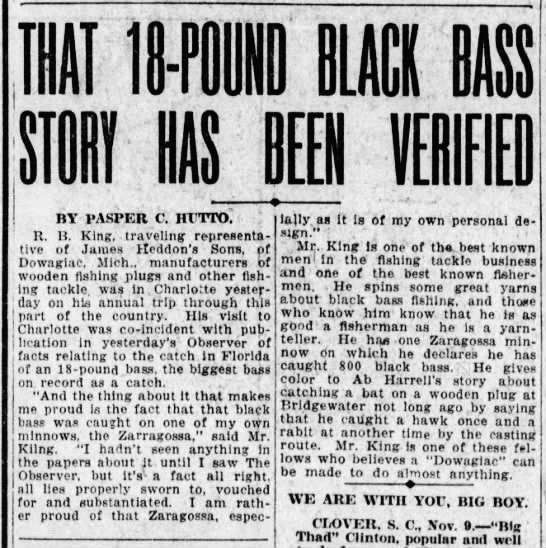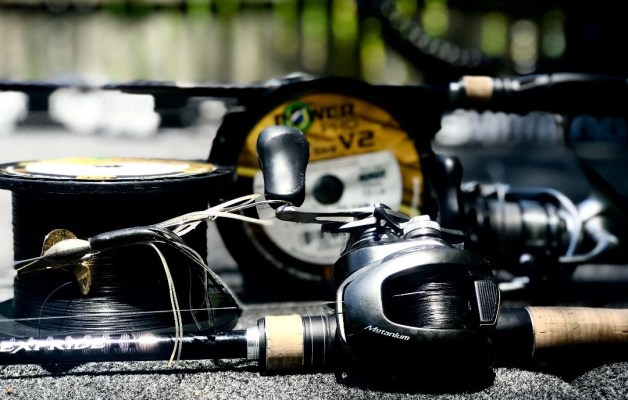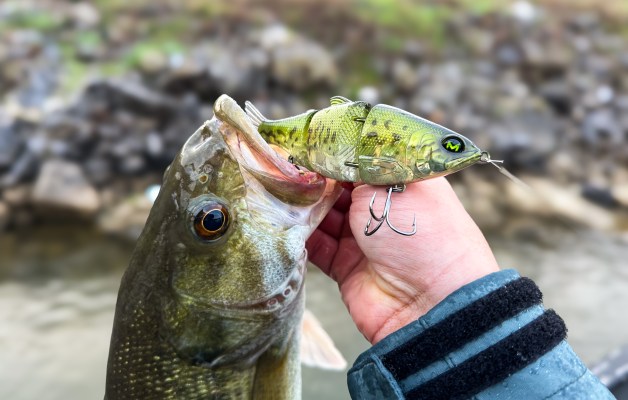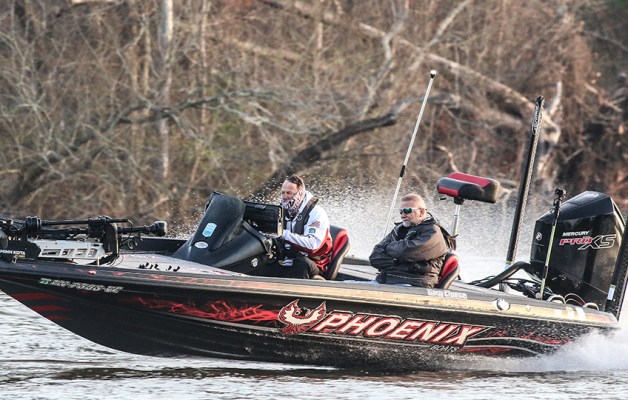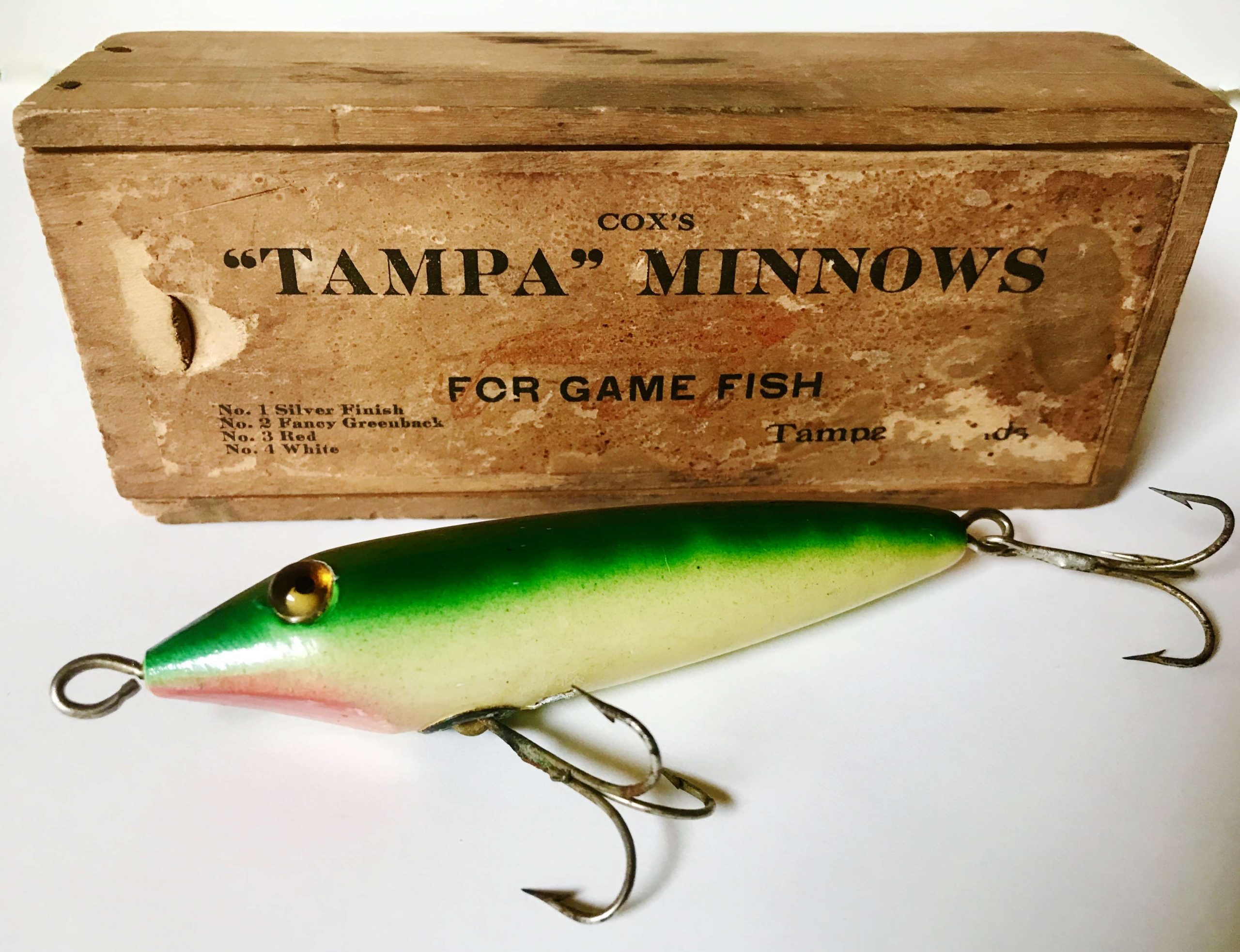
Editor’s note: Because of some newly acquired information, Bernie Schultz offers this revised version of the story, which first appeared a week ago.
If you like to fish topwater lures, chances are you own at least one walking-style bait. It might be a Heddon Zara Spook, Rapala Skitter V, Lucky Craft Gunfish, Storm-Arashi Top Walker or some other model. Whatever the make, there’s no doubt these are good choices anytime the surface bite is on.
That said, if I were to ask you to name the first walking bait ever conceived, could you answer with any certainty?
Would you say the Heddon Zara Spook was first? Most would, probably because it’s been around the longest. But that would be the wrong answer.
The Spook was not first … not even close. It actually evolved from the “Zaragossa” — a wooden lure introduced by Heddon prior to 1920. But was the Zaragossa first? Most vintage tackle collectors would tell you emphatically, “yes!” But if that’s true, then who was the person responsible for its design?
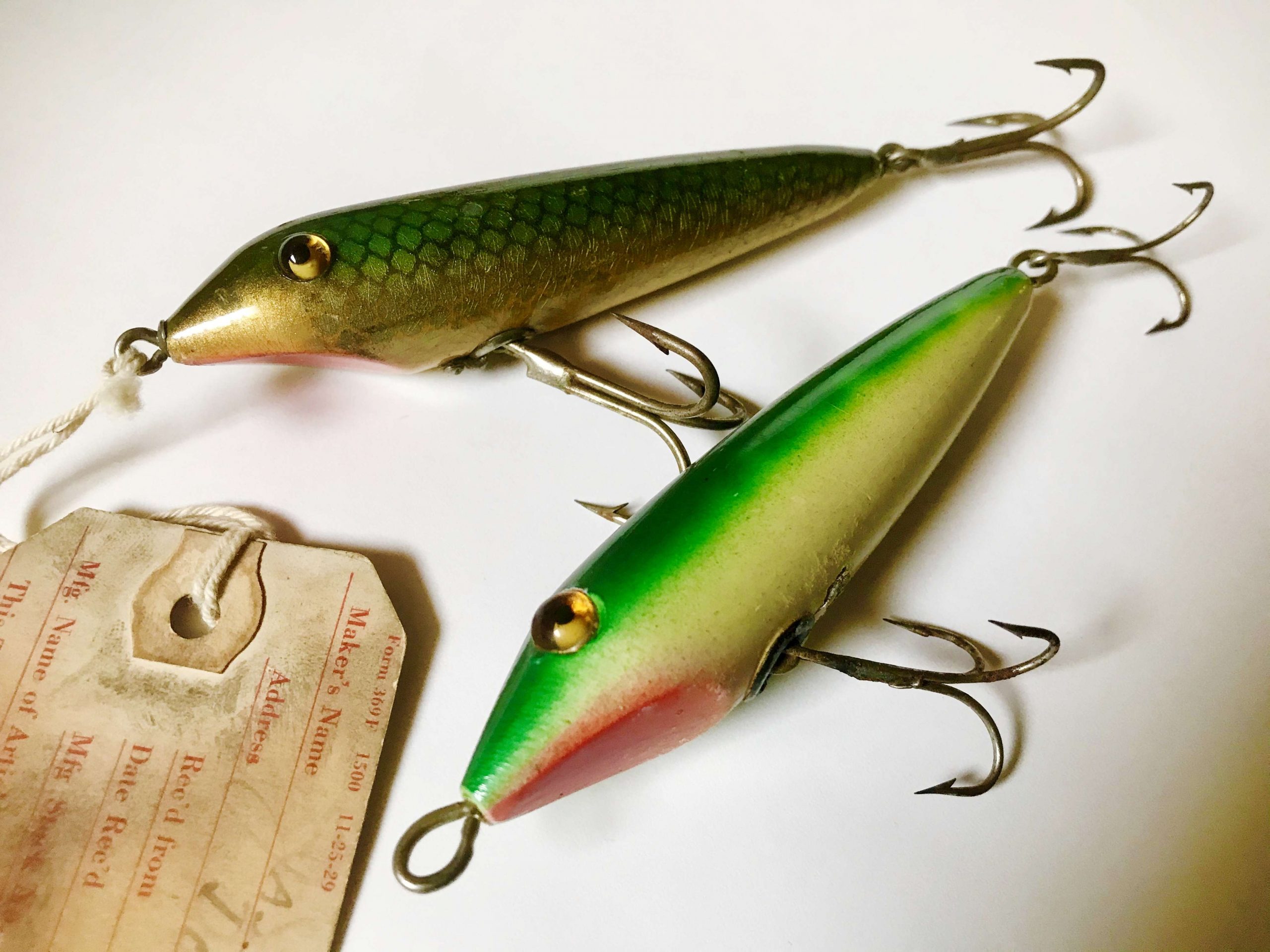
Many Florida-based collectors challenge the belief that Heddon had anything to do with its creation. They feel the first offering of a topwater walking lure was through Grover Cox — a sporting goods dealer in Tampa, Florida — around 1918. And I agreed with that assumption … until recently. Now I’m not so sure.
Searching for the truth
For the Florida faction, the story begins with Cox as a young North Carolinian who moved to Tampa, Florida to seek his fortune. Cox began his business venture in 1910, in bicycle sales, then gradually added a wide range of sporting goods to his catalog offerings — part of which included fishing tackle.
In 1916, he introduced the first of his “Tampa Minnows” — a fat-bodied wooden bait with fluted sides. His second offering appeared in a 1918 advertisement and was similar to the first, but featured a short, metal diving lip. Both lures were nearly identical in design to the Wilson Fluted Wobbler and Flanged Wobbler, wooden lures offered earlier by Wilson Sporting Goods Works of Hasting, Michigan. And that’s important to note.
Cox’s third offering was much different. Its design mirrors that of the earliest Heddon Zaragossas, and features what collectors refer to as the “no chin” body style — a design feature presumably intended to reduce drag during side-to-side movement of the lure.
Although Cox had number designations and names for his lures (including the Fish Hawk and Basdex), it’s unclear as to which was which. None of the early advertisements offer any distinction other than size or color variance. Some collectors believe the Basdex to be Cox’s walking bait, but there has been no clear proof to support that notion.
Among the few surviving images of Grover Cox is one of him with a man named King, crouching behind a large pile of freshly caught snook. What’s remarkable about this photo is that it is the only known photographic evidence of a Tampa (walking-style) Minnow. Or is it? Some contend that the lure in the photo is a no-chin Heddon Zaragossa.
If you look closely, you’ll see the lure suspended from a rod tip, over the pile of snook at his feet. What’s even more amazing is that the lure is shown in profile, displaying the “no chin” characteristic. While it’s known that Cox was selling his Tampa Minnows prior to 1920, there is no clear proof the no-chin model was among them.
In Bob Waterman’s book, Fishing for Florida’s Black Bass (1959), the author credits Robert King as being “the designer of the bait.” But was this the same King appearing in the photograph with Cox?
The plot thickens
In an article written by Jasper Hutto, featured in The Charlotte Observer in May 1922, there’s a quote by R.B. King reacting to a report of an 18-pound bass caught in Florida (see the clipping below).
King says, “And the thing about it that makes me proud is the fact that that black bass was caught on one of my own minnows, the Zaragossa…. I am rather proud of that Zaragossa, especially as it is of my own design.”
What’s even more revealing is that the writer refers to R.B. King as a “traveling representative of James Heddon’s Sons of Dowagiac, Mich.”
With the help of fellow collector, Colby Sorrells, I learned this was Roswell Bayard King of Pensacola, Florida — not Robert King. And that the name “Zaragossa” came from a street in Pensacola — once a red light district where the ladies sashayed along the street.
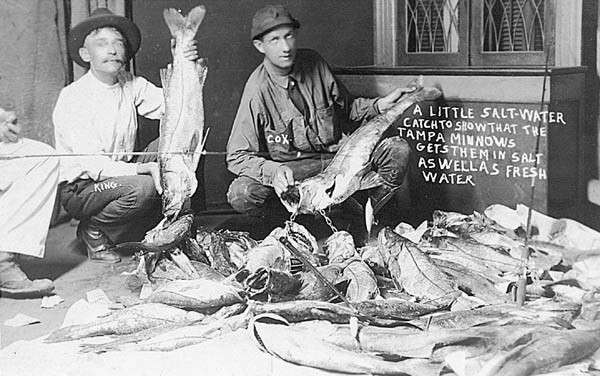
Because Hutto’s account was written in 1922, when all of this went down, you would think his version is more accurate. Waterman’s account was written nearly 37 years later.
Missing pieces
I’m sure many of my fellow lure collectors — especially devout Heddon collectors — are convinced this proves, beyond a doubt, that Roswell King was the inventor of the first surface-walking lure. But does it?
In his description of Roswell King, Hutto states “he spins some great yarns”— or, in more contemporary terms, he’s prone to exaggeration. If that’s accurate, then how credible is Roswell in proclaiming himself as the inventor?
In a Pensacola Journal column written by former B.A.S.S. Editor, Colin Moore, he states Roswell B. King was not the inventor of the Zaragossa, but that he learned of the Zaragossa from a local angler and took it to Heddon. But even that may be speculation, as that information was taken in an interview with Clyde Harbin — a lure collector/historian who was known for “spinning his own yarn.”
Perhaps King learned of the lure’s design during a business trip to Tampa and/or found examples for sale in Cox’s store. Any sales rep, after learning of a hot item, would certainly report back to the company he represents. And it’s likely that Heddon would have wanted to capitalize on any new trend in the marketplace — especially a lure with fresh and saltwater appeal, like the Zaragossa.
Then there’s the fact that there is no real patent for the Zaragossa — only a mechanical patent for a specialized hook attachment used on the lure.
Considering this, wouldn’t the most dominant manufacturer of the period protect their newest lure design? Heddon patented many of its products, so why would the Zaragossa with its unique design be any different? And is it a coincidence that the Zaragossa reaches the market about the time the Cox lure disappears?
I don’t think so.
On the flipside, there’s the issue of Grover Cox marketing the designs of other manufacturers as his own. Remember, Cox’s first two Tampa Minnows were clearly fashioned after the Wilson Fluted Wobbler and Flanged Wobbler mentioned earlier.
So was Heddon first … or was it someone else? It’s all a bit confusing. Without conclusive evidence, it’s all conjecture. There simply is no positive proof of who invented one of the most legendary lures of all time.
